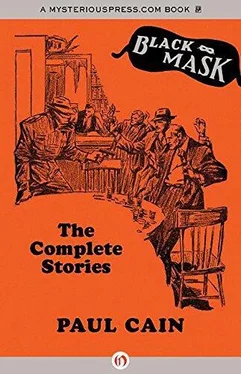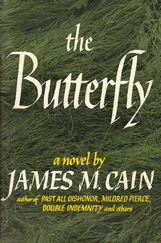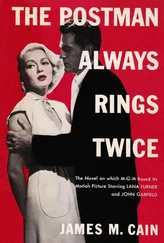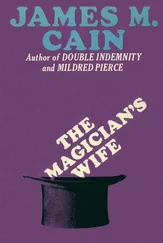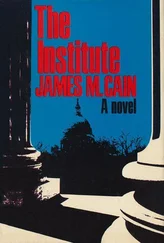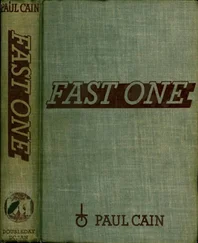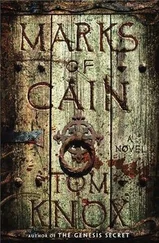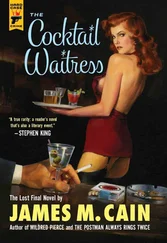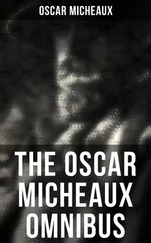Los Angeles also drew younger Midwesterners on the make. Indeed, the most revealing detail of the routine, telegraphic entry in the 1923 City Directory has nothing to do with the Sims family’s living arrangement. It’s a matter of professional ambition. George C. Sims, Jr. — twenty-one years of age — is registered as an “author.” [9] Los Angeles City Directory , 2810.
In the mid-’20s, probably eager to shake the image of an Iowan bumpkin, Sims rechristened himself Ruric (first George, then Peter). He began cutting a figure in Hollywood, grabbing production assistant and assistant director credits on Josef von Sternberg’s The Salvation Hunters (1925) and A Woman at Sea (1926), respectively.
It was at this time that his flair for pseudonyms left a permanent mark on Myrna Williams, a young starlet searching for a screen name. In her memoir, Myrna Loy: Being and Becoming (1987), she writes: “Peter Rurick [ sic ], a wild Russian writer of free verse, suddenly came up with ‘Myrna Loy.’ And I said, ‘What’s that?’ It sounded alright, but I still wasn’t convinced about changing my name.” [10] Myrna Loy and James Kotsilibas-Davis, Myrna Loy: Being and Becoming (New York: Knopf, 1987), 42. See also Larry Carr, “Myrna Loy,” in More Fabulous Faces: The Evolution and Metamorphosis of Dolores Del Rio, Myrna Loy, Carole Lombard, Bette Davis, and Katharine Hepburn (Garden City, N.Y.: Doubleday, 1979), 55.
A Russian free-verse poet? Surely a ruse, but his research was passable. He probably borrowed Peter from Peter the Great, and Ruric from the ninth-century founder of the Rurikid dynasty. And Myrna Loy, for its part, sounds suspiciously similar to Mina Loy, a real free-verse poet. Cain would later claim to have published in Blast and transition . Anachronistic fabrications, but evidence of wide-ranging reading. He would have run across Mina Loy’s work in the little magazines. A couple of her “Aphorisms on Futurism” (1914) even seem to predict Cain’s distinctly modernistic aesthetic: “IN pressing the material to derive its essence, matter becomes deformed. AND form hurtling against itself is thrown beyond the synopsis of vision.”
By 1930 he was in New York. His stint there yielded a new persona — Paul Cain — and a bruising relationship with an actress named Gertrude Michael, who matched the alcoholic Sims drink for drink. In 1932 she landed an M-G-M screen test in Hollywood, and he tagged along. They took up residence at the stately Montecito Hotel & Apartments (6650 Franklin Avenue), where he crossed paths with a fellow Black Mask regular, Raoul Whitfield. It was here that Sims completed Fast One , dedicating it to Michael, who likely served as the model for Granquist, Kells’s alcoholic moll. He sold the novel’s story to Paramount, which turned it into Gambling Ship (1933), a lumbering vehicle for Cary Grant and Benita Hume. Sims and Michael split when the book was still hot off the presses; as the L. A. Times gossip columnist “Tip Poff” put on October 23, 1933, “Peter Ruric (Paul Cain) and Gertrude Michael are going places. But not together.” How right he was: the three of them — Ruric, Cain, and Michael — would chart their own courses.
As Ruric, Sims enjoyed a respectable if humdrum career in screenwriting, which began with work on the script to Affairs of a Gentleman (1934). His most distinguished effort was the screenplay for Edgar G. Ulmer’s The Black Cat (1934), a masterpiece of expressionistic horror. In a January 1998 interview with Tom Weaver, Shirley Ulmer described her husband’s collaborator as “brilliant, really, but cuckoo . [...] He wasn’t like any ordinary person I’d ever met. But very, very brilliant — Edgar adored him, and they were very close.” [11] Tom Weaver, “Shirley Ulmer,” in I Was a Monster Movie Maker: Conversations with 22 SF and Horror Filmmakers (Jefferson, N.C.: McFarland, 2001), 233.
Edgar Ulmer’s own assessment, given to Peter Bogdanovich in 1970, is a bit more somber: “He was a young man who had come out from New York, and I met him; a very intelligent boy who should have been a great playwright but got lost.” [12] Peter Bogdanovich, “Edgar G. Ulmer,” in Who the Devil Made It: Conversations with Legendary Film Directors (New York: Knopf, 1997), 575.
Relying on the testimony of relatives, Bowman limns the Ruric pose: he was a “blond, bearded member of the Malibu Beach crowd, taken to wearing ascot scarves.” [13] David A. Bowman, “Cold Trail: The Life of Paul Cain,” in Fast One (Berkeley, CA: Black Lizard, 1987), vii. See also Dennis Fischer, “The Black Cat,” in Boris Karloff , ed. Gary J. Svehla and Susan Svehla (Baltimore: Midnight Marquee, 1996), 94–95.
He apparently spent the next four years in Europe with his mother. The only record of his work in the European film industries is shared credit for the script to Jericho (1937), a British drama starring Paul Robeson that was released in the U.S. as Dark Sands . Sims then returned to make another splash in Tinseltown.
His accomplishments of note during this second Hollywood period are the story for Twelve Crowded Hours (1938), which he hammered out with Garrett Fort — an adherent of Meher Baba whose life would end in suicide at a Los Angeles hotel in 1945 — and script work on Grand Central Murder (1942), a giddy maze of flashbacks that highlights his facility with form. He also contributed to the adaptation of Ayn Rand’s Night of January 16th (1941).
On August 18, 1939, he married a twenty-year-old “cigarette girl” from Nebraska named Virginia Maxine Glau, who changed her moniker, at her husband’s suggestion, to Mechel Ruric. (Although Bowman gives her name as Mushel, the L. A. Times and the 194 °Census record it as Mechel.) As Bowman describes it, Mechel and Sims met cute at her place of work: “One night, he and the notorious Prince Romanoff wobbled into the new nightclub, the Mocambo. Romanoff wobbled because he was nipped, and Ruric wobbled because he was nipped and his leg was in a cast.” [14] Bowman, viii.
The impostor Ruric palling around with the impostor Romanoff? All the makings of a royal Russian farce.
The Rurics’ honeymoon period came to a screeching halt seven months later, in March 1940, with Mechel’s flight from the third-story balcony of the couple’s home at 1412 N. Kingsley Drive, after what must have been a hell of a quarrel. She survived and stuck with her husband (for the most part) until 1943. Mechel furnished Bowman with a bleak sketch of a man losing his grip: “On most nights Ruric drove home from the studio blind drunk, miraculously navigating the curving driveway without steering off the cliff. He then stumbled up to the porch, crashed through the front door, and passed out in the hallway.” [15] Ibid.
When Mechel finally left him, Sims took a room at the Chateau Marmont (8221 Sunset Blvd.), where he befriended an unlikely fellow resident, Sinclair Lewis, who’d been brought out by M-G-M to work on a screenplay with Dore Schary. Lewis writes about Sims, who was introduced to him as Peter Ruric, in a series of letters to his mistress, Marcella Powers. His letter of July 17, 1943, on Marmont stationary, gives us another glimmer of Sims’s mythic self, and of its power to impress:
My great pal here a new man whom you would like as much as you do Hal Smith (with less safety from propositioning, however) — Peter Ruric, to whom I was introduced by [Clifton] Kip Fadiman but who proved to be an MGM writer with a cell just a few doors from mine. He is in the Elliott [sic] Paul tradition, with a touch of Peter Godfrey (no, haven’t seen him yet) and a dash of Francois Villon. For years he has hewed out a movie script, then escaped to Paris — China — Carmel — Buenos Ayres, to write an exquisite but unsaleable story, and, casually along the way, to marry or just amiably live with and just as casually to leave some lovely girl — I have only his genteel and unpretentious word for it, however, that they were lovely.
Читать дальше
